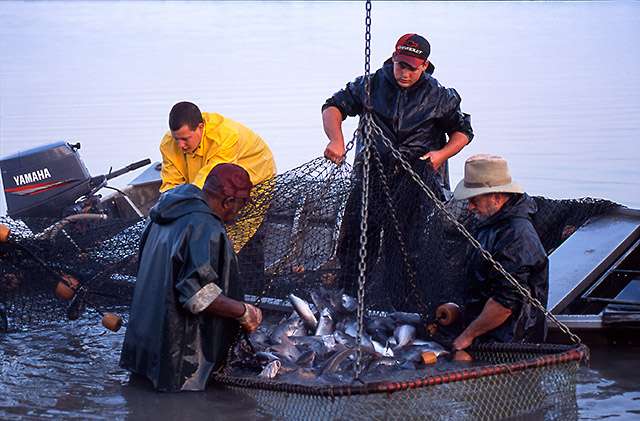The first sequencing of a channel catfish genome

A fish named "Coco" is at the center of the first genome sequence for any catfish species.
Catfish is an important dietary protein source and is the third most commonly farmed fish worldwide. While more than 2,500 species of catfish are known to exist, the channel catfish dominates U.S. aquaculture, accounting for more than 60 percent of fish and seafood production. In 2015, production sales for U.S. catfish growers totaled $361 million, up 3 percent from the previous year, according to USDA's National Agricultural Statistics Service.
Research at the Agricultural Research Service (ARS) Warmwater Aquaculture Research Unit (WARU) in Stoneville, Mississippi, helps catfish producers improve the quality and quantity of their products. Recently, a team led by WARU molecular biologist Geoff Waldbieser and Auburn University scientist John Liu produced the first genome-sequence assembly for the channel catfish. It's also the first for any type of catfish.
The total complement of DNA in the cell is called the "genome," and the catfish genome, like an instruction manual, contains the information needed to make and "operate" each fish. The catfish genome-sequence assembly gives scientists the ability to read the instruction manual for each individual catfish and look for differences that make some animals grow faster or resist disease better.
Waldbieser used a special breeding technique called "gynogenesis" to produce the genome donor, Coco, so that she contained two copies of DNA—like other animals—except that both copies were completely identical.

"I named her after Coco Chanel, because she's Channel No. 1," Waldbieser says.
Collaborating with ARS scientists at the Genomics and Bioinformatics Research Unit in Stoneville and the Bovine Functional Genomics Laboratory in Beltsville, Maryland, Waldbieser produced about 800 million DNA sequences from Coco's DNA.
"Those sequences were like puzzle pieces. It took 2 months on a 64-processor computer workstation to align them and produce the genome assembly," Waldbieser says.
Waldbieser and WARU geneticist Brian Bosworth recently used Coco's genome to identify variation in DNA sequences between individual catfish within the Delta Select line—an improved catfish line being developed at WARU for use by farmers. "Now that we know where the genetic variations in the DNA sequences are located, we will be able to analyze different parts of the genome inherited by different individual catfish," Waldbieser says. "We can identify those segments, propagate them to our fish population, and improve meat production and production efficiency for farmers."
This is important, because improving catfish growth rate, fillet yield, meat quality, and disease resistance will greatly benefit fish farmers, Waldbieser adds.
More information: Qifan Zeng et al. Development of a 690 K SNP array in catfish and its application for genetic mapping and validation of the reference genome sequence, Scientific Reports (2017). DOI: 10.1038/srep40347
Journal information: Scientific Reports
Provided by Agricultural Research Service




















